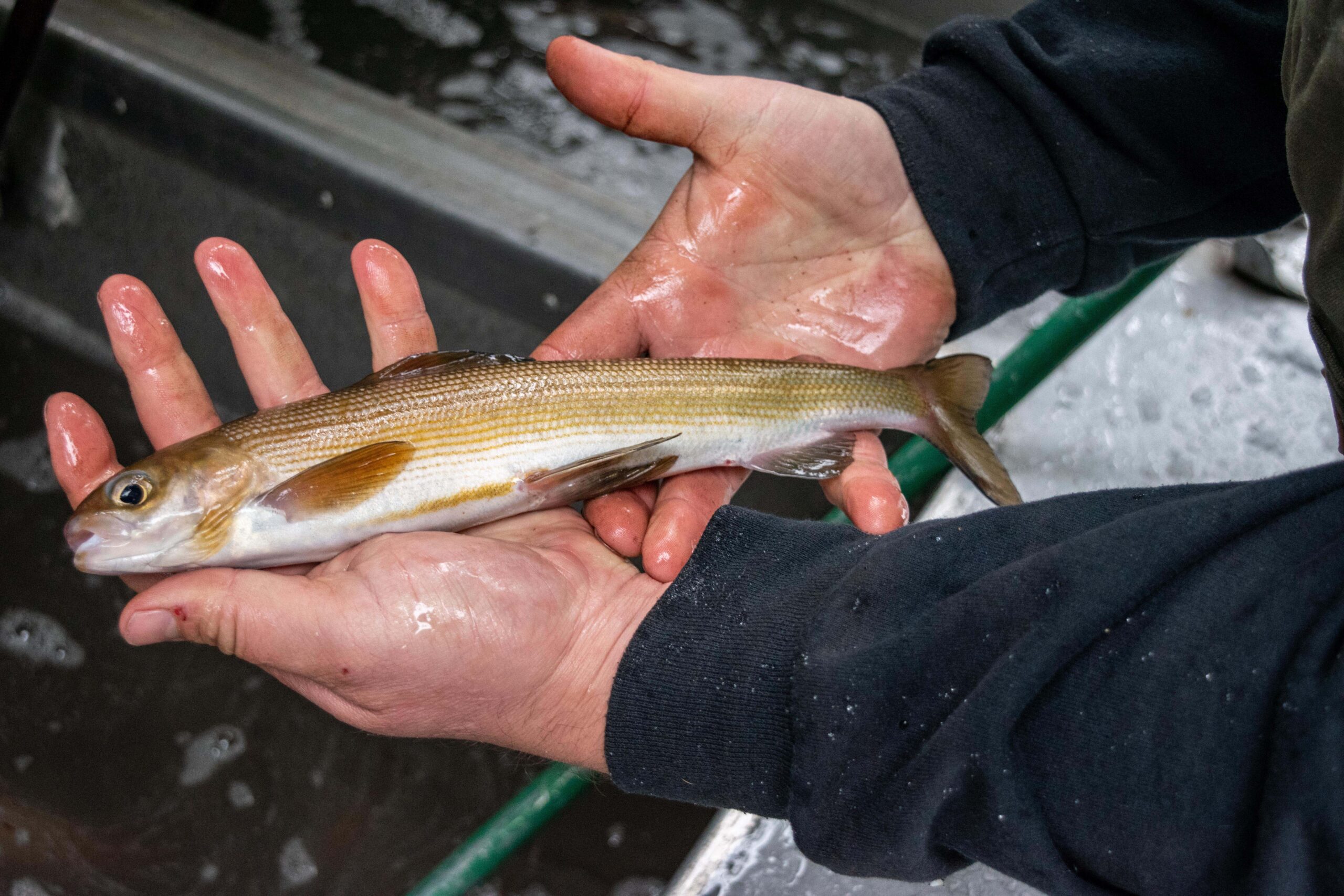December 16, 2023.
A Milestone was reached in the continuing Arctic Grayling reintroduction effort when
in early November, three Michigan lakes were stocked with Arctic Grayling.
These fish are surplus from the establishment of a grayling brood stock as part of the Michigan Arctic Grayling Initiative. The initiative has been underway since Little River Band of Ottawa Indians and the Michigan Department of Natural Resources began a partnership aimed at reintroducing this iconic species to Michigan waters in 2015.
The full partnership now includes nearly 50 stakeholder and partner groups, along with the general and angling public.
Four hundred grayling were stocked at Alger County’s West Johns Lake, 300 at Penegor Lake in Houghton County and nearly 1,300 in Manistee County’s Pine Lake.
The fish were taken from the Marquette State Fish Hatchery in Marquette and represented year classes from 2019 and 2021.
“When starting a year-class of brood stock, you always start with more than you will need in the end to allow for potential losses to disease, mechanical issues, et cetera,” said Ed Eisch, assistant chief of the DNR’s Fisheries Division. “Such losses never materialized with the two year-classes that were stocked. The numbers needed to be thinned down to levels that are safe to carry into the future at the Marquette hatchery.”
With the third year-class recently clearing their requisite health inspections, it is highly likely that there will be additional surplus available for stocking again next fall.
The Arctic grayling, called “Nmégos” by indigenous people, was an important connection to nature as it provided a substantial food source for the Anishinabek people’s subsistence.
This connection has been lost for the Little River Band of Ottawa Indians community and the Anishinabek people through the extirpation of the Arctic grayling from Michigan. The arctic grayling reintroduction initiative, with the supporting partners, provides a way to reconnect the Anishinabek people with their culture and heritage.
“There is a strong Tribal interest in reclaiming what was lost. To recapture what has been lost takes more effort, but as a Tribe, Little River Band of Ottawa Indians is committed to this project because it is the right thing to do,” said Larry Romanelli, Ogema Little River Band of Ottawa Indians.
At the October meeting of the Michigan Natural Resources Commission, fishing regulations were modified so that it is now legal for an angler to attempt to catch, but not harvest, Arctic grayling.
“We’re excited to be able to provide this opportunity for Michigan’s anglers to try to catch an Arctic grayling this early in the reintroduction initiative,” said DNR Fisheries Division Chief Randy Claramunt. “Anglers need to be aware, though, that any grayling that they catch must be released. They cannot be harvested.”
With the exception of Pine Lake, the lakes the grayling are stocked in are open to fishing from the last Saturday in April until Oct. 31.
Arctic grayling are known to be susceptible to handling stress when caught by recreational anglers. Anglers are encouraged to use single, barbless hooks and to allow the fish to remain in the water when taking them off the hook. Actions such as these will reduce the chances that the released fish will die.
Now that the three lots of future broodstock have been developed, the Little River Band, the DNR and other partner groups are eyeing spring of 2025 as the likely timeline for the first eggs to go into remote site incubators.
While it would be great to start earlier, females of one year class need to be spawned with males from a different year class. This results in the most genetically fit fish possible by avoiding the potential or crossing siblings.
Work continues by several partner groups to collect stream data to determine which watershed will be selected to receive the first eggs in this initiative.

Arctic grayling stocking at West John Lake in Alger County on Nov. 8, 2023.
